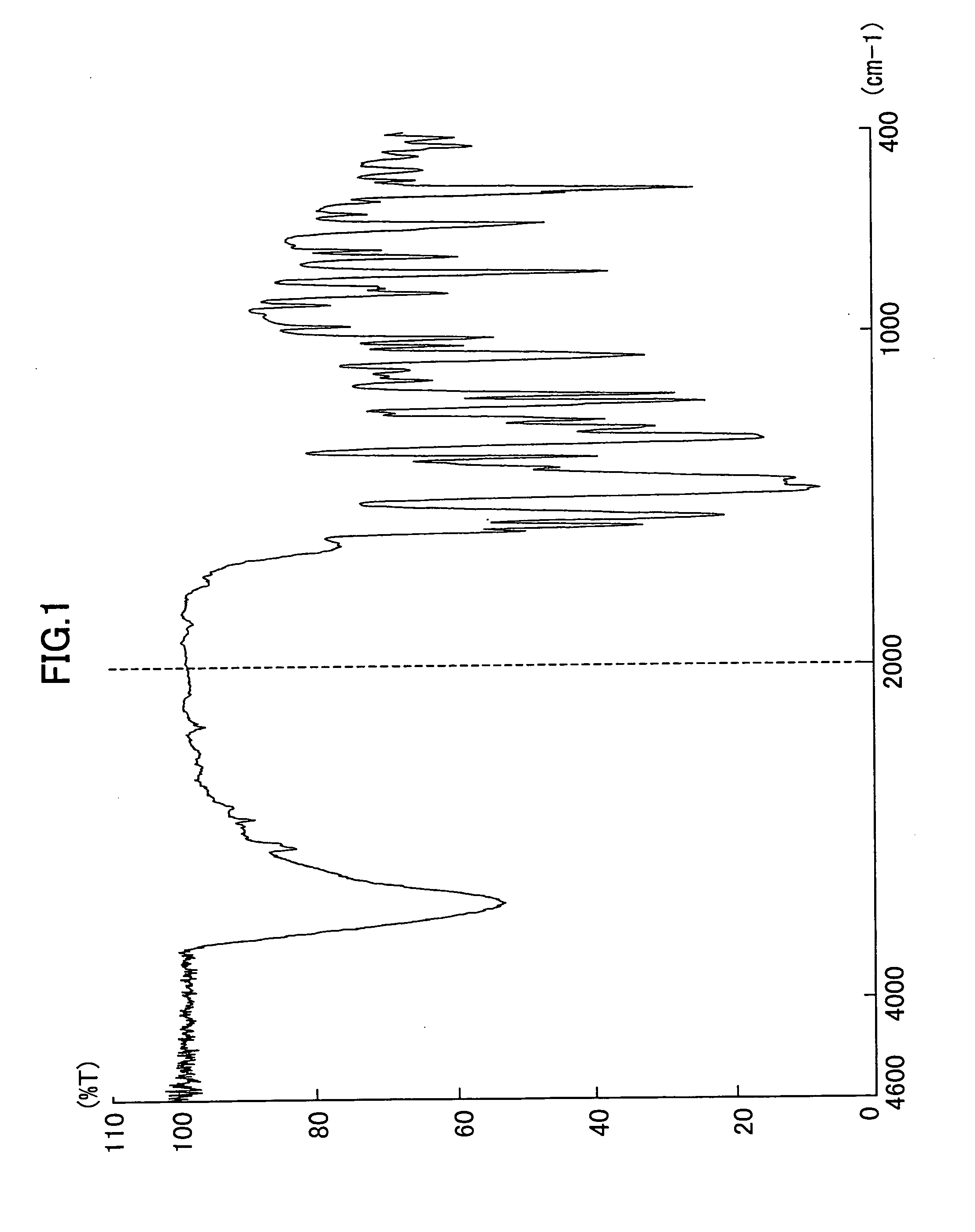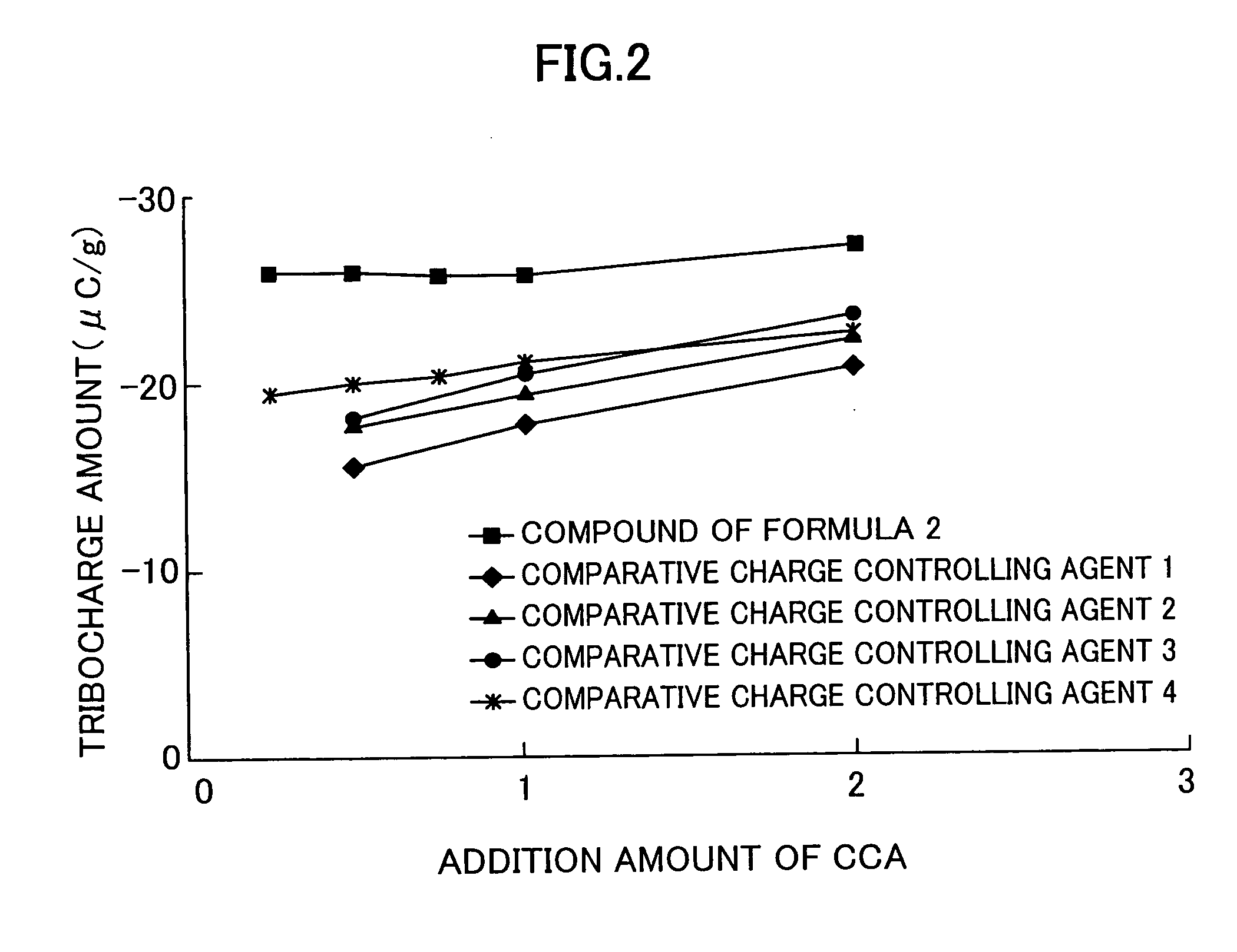Mono azo iron complex compound, and charge controlling agent and toner using the same
a technology of iron complex compound and charge controlling agent, which is applied in the field of mono azo, can solve the problems of short copying, prone to fluctuation of image quality during continuous copying, and short copying of clear images, and achieves high charge level, high charge level, and high rate of initial charge increase
- Summary
- Abstract
- Description
- Claims
- Application Information
AI Technical Summary
Benefits of technology
Problems solved by technology
Method used
Image
Examples
example 1
[0156] The present invention will be further described by means of examples. However, those examples are presented not to limit the scope of the invention in any way whatsoever. “Parts” mentioned in Examples all refer to “parts by mass” unless otherwise indicated.
production example 1
Production of a Compound Represented by Formula (2)
[0157] 57.4 parts of 4-Chloro-2-aminophenol was added to 580 parts of water and 84 parts of 35% hydrochloric acid, and the mixture was stirred with cooling for dissolution. Aqueous solution, whose internal temperature was kept at 10° C. or lower, of sodium nitrite obtained by dissolving 28.2 parts of sodium nitrite in 50.7 parts of water was added dropwise to the above aqueous hydrochloric acid solution. During the operation, 50 parts of ice blocks were added as appropriate to keep the temperature at 5 to 10° C. After the dropwise addition, reaction was allowed to occur by stirring the system at 10° C. for 2 hours. To the system was added 7.3 parts of sulfamic acid, and reaction was allowed to proceed for 10 minutes. It was checked through the use of potassium iodide / starch paper that the system was devoid of remains of excess nitrite. Thus, a diazo solution was obtained.
[0158] Next, 101 parts of 3-methyl-1-(3,4-dichlorophenyl)-5-...
production example 2
Production of Another Compound Represented by Formula (2)
[0170] 68 parts of 4-Chloro-2-aminophenol was added to 500 parts of water and 147 parts of 35% hydrochloric acid, and the mixture was stirred with cooling for dissolution. Aqueous solution, whose internal temperature was kept at 10° C. or lower, of sodium nitrite obtained by dissolving 33.4 parts of sodium nitrite in 61.6 parts of water was added dropwise to the above aqueous hydrochloric acid solution. During the operation, 40 parts of ice blocks were added as appropriate to keep the temperature at 5 to 10° C. After the dropwise addition, reaction was caused to occur by stirring the system at 10° C. for 2 hours. To the system was added 6.8 parts of sulfamic acid, and reaction was allowed to proceed for 10 minutes. It was checked through the use of potassium iodide / starch paper that the system was devoid of remains of excess sodium nitrite. Thus, a diazo solution was obtained.
[0171] Next, 117.5 parts of 3-methyl-1-(3,4-dichl...
PUM
| Property | Measurement | Unit |
|---|---|---|
| volume average particle diameter | aaaaa | aaaaa |
| mass % | aaaaa | aaaaa |
| mass % | aaaaa | aaaaa |
Abstract
Description
Claims
Application Information
 Login to View More
Login to View More - R&D
- Intellectual Property
- Life Sciences
- Materials
- Tech Scout
- Unparalleled Data Quality
- Higher Quality Content
- 60% Fewer Hallucinations
Browse by: Latest US Patents, China's latest patents, Technical Efficacy Thesaurus, Application Domain, Technology Topic, Popular Technical Reports.
© 2025 PatSnap. All rights reserved.Legal|Privacy policy|Modern Slavery Act Transparency Statement|Sitemap|About US| Contact US: help@patsnap.com



